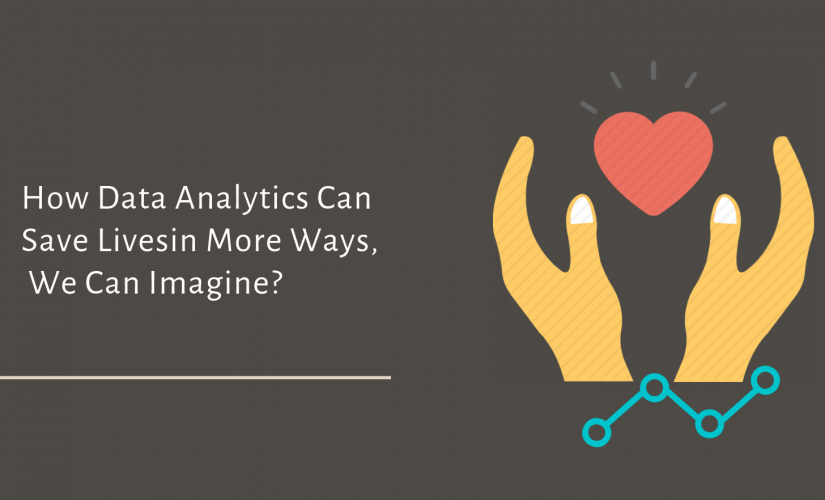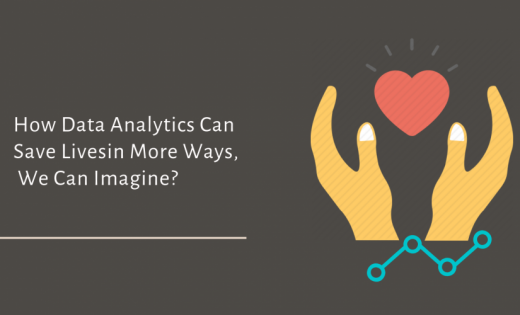How Data Analytics Can Save Lives
How Data Analytics Can Save Lives

Technologies like artificial intelligence and data analytics are disrupting all walks of life, including the healthcare sector. We live in a world where robots are performing surgery while people are consulting doctors and receiving medical prescriptions online. Even the governments are investing much more in the healthcare sector than they were a decade ago. Here is how data analytics can save lives.
But in spite of everything that is transforming the healthcare industry, there is one thing that is continuously growing. These are nothing else but medical costs. Today the cost of availing a healthcare solution is much higher than it was 20 years ago.
The World Health Organization (WHO) in one of its reports, suggests an upwards trajectory of healthcare spending across the globe. Health spendings on an average are increasing 4 percent to 6 percent every year, out of which 35 percent directly comes from the pocket of the people. This means nothing but more and more people are being pushed to poverty. As a result, fewer of them are getting adequate healthcare facilities, which is their right.
But technology has a huge role to play in this picture. When utilized to its sheer potential, it can miraculously change the dynamics of the healthcare industry. Not only can it help in reducing costs but also a significant number of lives.
Healthcare analytics has a lot of potential from predicting the outbreak of diseases to providing affordable treatment options, preventing diseases along with improving the quality of life. Let’s take a close look at its facets and understand how data analytics can save lives in more than a couple of ways-
Real-time Alerts
Data analytics for the healthcare sector can help medical professionals by providing medical data in real-time. This will allow them to make better decisions when writing prescriptions to their patients.
But in developing countries where medical experts are scarce as compared to those who need medical services, patients’ lives are out to risk many times. Be it long queue hours or unavailability of doctors, patients who cannot afford private healthcare services suffer a lot.
Data analytics through wearable devices on the hand can ease such situations. They can monitor and keep track of the patient’s data on cloud platforms. Hence, whenever an emergency arises, doctors get an alert and can reach out to the patient in the least amount of time.
Over time, doctors can identify macro trends with the medical data and come up with better strategies to provide health care.
Efficient Allocation of Staff
Healthcare organizations often suffer from operational issues in the management of staff and medical equipment. There are many situations when an emergency case isn’t admitted to the hospital due to a lack of beds or adequate medical staff.
Data analytics in such situations can ensure proper allocation of staff and prepare organizations to accommodate needy patients. According to a recent report by Forbes, there are four hospitals part of an organization called Assistance Publique Hopitaux de Paris, which are benefiting from data analytics. These organizations can predict the number of patients on an hourly and daily basis in the hospital.
Such examples throw immense light on the potential of data analytics as a life-saving tool.
Battling Cancer
Cancer is one of the deadliest diseases of the world and is still not completely curable. With data analytics, scientists can study the massive amounts of data available in the public and private sectors. This can help them decide a suitable course of action for patients by considering treatment plans that have had the highest success rate across the world.
Scientists can use data analytics to study the interaction of cancer cells with different treatment plans as well as find correlations between agents that have the potential to cause cancer. Since nearly nine million people die every year due to cancer, data analytics can be the difference and save lives.
Disease Outbreaks
Epidemiology is the science of distribution and control of diseases. Healthcare analytics can integrate into epidemiology and provide valuable insights on the outbreak of a disease.
By studying both structured and unstructured data, it can discern any patterns and transform them into actionable insights. Not only does this approach ensure better health care outcomes but also the prevention of significant threats, ultimately saving lives.
Conclusion
With the abundance of data prevailing in the healthcare sector, it’s time that to put it to action through healthcare analytics. There are millions of examples to show that data analytics is saving lives and reducing healthcare costs. Its contribution extends from being just a scientific tool for improving people’s quality of life.
The only need is for the government’s intervention to invest in technology and turn it as the backbone of the healthcare system. In other words, it means saving lives and preparing for an active population healthcare management system.
The post How Data Analytics Can Save Lives appeared first on ReadWrite.
(104)


